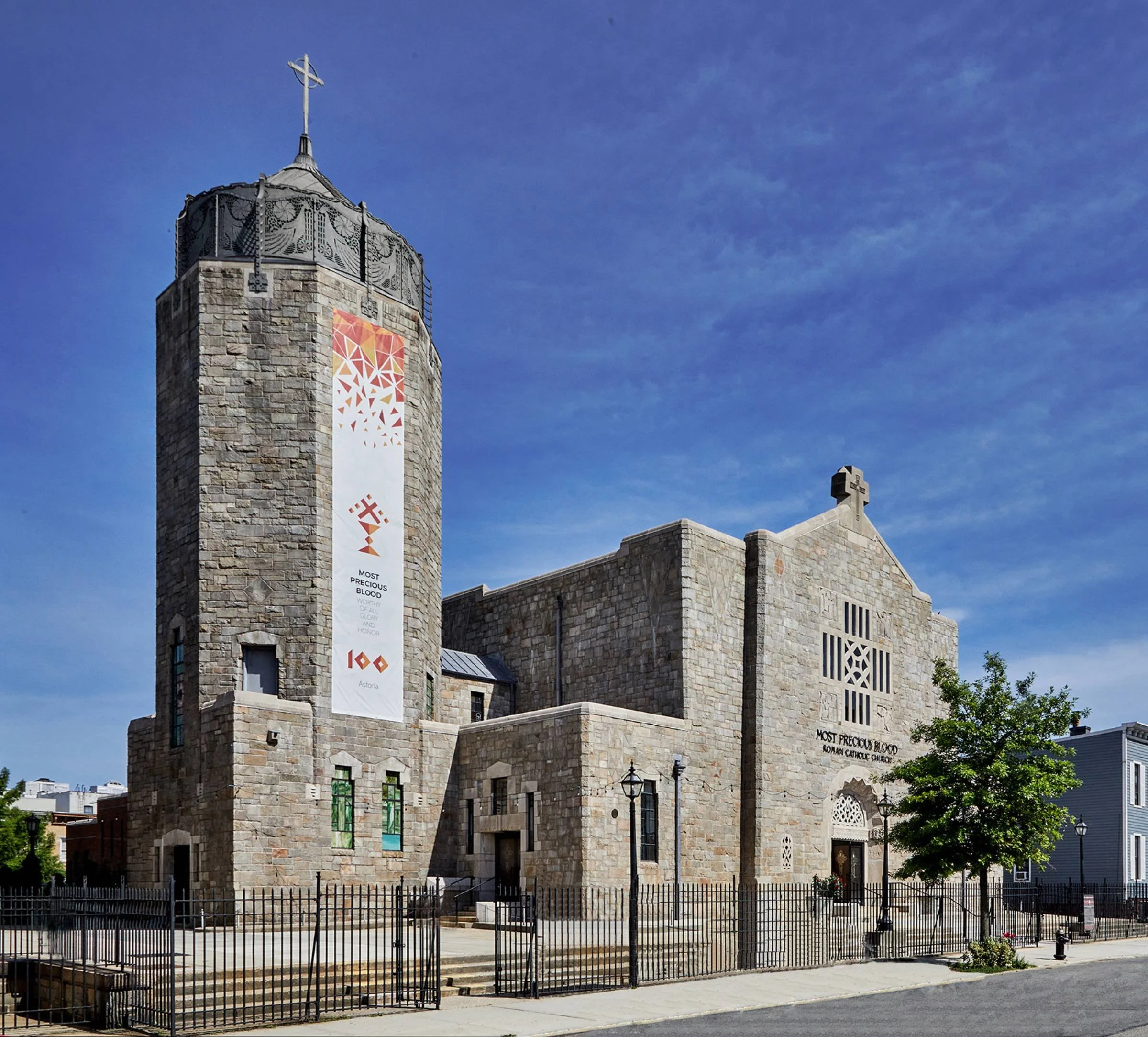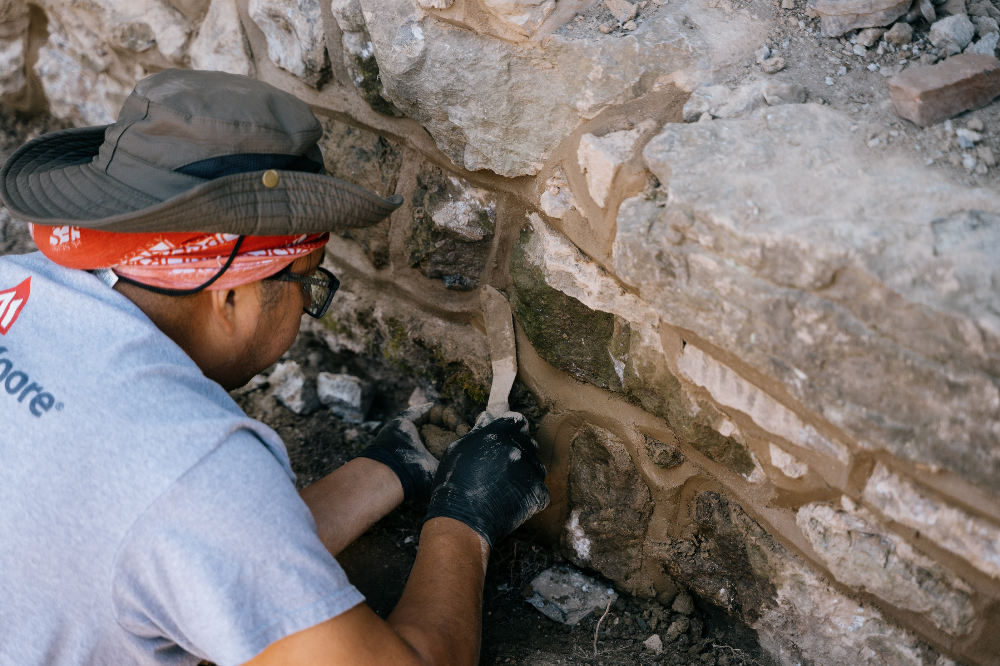Study Finds Mayor Adams Much More Resistant to Designations than His Predecessors in Office; Fewer Landmarks Named Since Law Favored by Real Estate Industry Passed; Every Part of City Seeing Designations Drop Dramatically and Threatened Historic Buildings Ignored
Read MoreNow in its 40th year, the League's annual Excellence Awards program allows us to shine a light on the people who are using historic preservation to make all our lives better —through exemplary restoration projects, indispensable publications, individual action, and organizational distinction. This year’s Award winners will be recognized at a public reception in NYC on Friday, November 15. Event details can be found here.
Read MoreRestoration of the Opera Hall performance space was the final stage in bringing this historic structure back to life. The building is now a jewel in the center of town, creating a sense of community pride. Completing the performance hall renovation, preserving the building’s architectural character and history, was like putting the “cherry on the sundae.”
Read More“We are truly humbled and grateful to receive the Preservation League’s Excellence Award,” said Shelley Worrell, Founder of I AM CARIBBEING. “This recognition is a testament to the power of Little Caribbean and the importance of preserving our heritage. We look forward to continuing our mission to uplift and celebrate Caribbean culture, community and commerce in Brooklyn and beyond.”
Read MoreLocated in the heart of Elmira's civic historic district, the Reynold's Way project is comprised of four very different buildings that had all been vacant for many years. Taken together, Reynold’s Way now houses 41 affordable apartments. The work that was done to convert these four separate buildings into affordable housing celebrates the historic integrity of each building and supports the notion that everyone deserves quality living space. Susan Bull notes that, “We are able to serve people who are choosing to live in a community they love by bringing four spaces back to livable (and beautiful) condition. I’m proud to be a part of the affordable housing supply.”
Read MoreSaratoga Springs Preservation Foundation successfully preserved 65 Phila Street, a historic property built in 1851 and later modified to the Italianate style, which had fallen into severe neglect (before and after photos of the front facade shown above). After years of advocating against demolition and working with the city to enforce property maintenance codes, the Foundation acquired the building in May 2021 with the assistance of Mark Haworth, a long-time member of the Foundation. The Foundation undertook a comprehensive rehabilitation, including environmental remediation, structural stabilization, and exterior restoration. Through monetary and in-kind donations, the "Revive 65" campaign raised over $500,000. The project, completed in 2024, removed long-standing blight, increased property tax revenue, and demonstrated the community and economic benefits of historic preservation. The property is now on the market, with proceeds going to the Foundation’s Historic Property Redevelopment Fund.
Read MoreCanal Commons is a $64 million affordable housing project that has changed the Rochester, NY landscape. Located in the historic Susan B. Anthony neighborhood, Canal Commons was a long-vacant historic warehouse building, which has been converted into a 123-unit apartment building. The rehabilitation was made possible through incentives including Low Income Housing Tax Credits and Historic Tax Credits. In addition to providing high quality affordable housing, most Canal Commons apartments are reserved for residents who have experienced chronic homelessness or are in recovery from mental health and substance use disorders. The creation of this supportive housing was made possible through the Empire State Housing Initiative (ESSHI) administered through the NYS Office of Mental Health. This project is a mixed-income development that serves families earning up to 60% of the Area Median Income. The project also participated in the NYS Brownfield Cleanup Program and in NYSERDA’s Multifamily New Construction Program, significantly improving the viability of the neighborhood and of Canal Street.
Read MoreCompleted in 2023, East End II is RUPCO’s largest project to date. This $37-million scattered-site development includes 24 building sites spread across a 7-block radius located in New York State’s second-largest historic district. East End II includes the restoration of 10 vacant historic buildings and added new construction on 12 vacant lots – creating a total of 61 new, mixed-income homes plus a community space.
Read MoreStill Standing: The Barns of J.T. Wells & Sons strategically highlights the history, heritage, and present-day plight of Western New York’s agriculturally and architecturally significant Wells barns. This television documentary, produced by Churchbell Creative, LLC., creatively explores ways that remaining barns can regain their relevance through adaptive reuse while fostering community engagement in their preservation before these barns disappear from the landscape entirely due to development, decay, and obsolescence.
Read MoreVacant for many years, the sprawling Moyer Factory complex on Syracuse’s Northside has undergone an incredible transformation into 128 units of affordable housing, including 50 designed for tenants requiring supportive housing. The rebranded Moyer Carriage Lofts is the largest public housing project in the City of Syracuse. The League is thrilled to recognize this this project and the team who made it happen with a 2024 Excellence in Historic Preservation Award.
Read MoreThe restoration of Most Precious Blood Church, an Art Deco masterpiece located in Astoria, New York, was a monumental effort aimed at preserving a historic landmark while ensuring its continued service to the community. Built in 1932, the church is one of the earliest examples of Art Deco ecclesiastical architecture in the US. Renowned architects Henry J. McGill and Talbot Hamlin masterfully blended Art Deco aesthetics with influences from Celtic architecture, creating a distinctive and timeless design.
Read MoreThe Roosevelt Island Lighthouse restoration was completed in 2022 after a years-long project initiated by the Roosevelt Island Operating Corporation. The project included restoring brick, stone, windows, and doors. Site improvements at the Lighthouse include installation of a new metal spiral staircase, new electrical and LED accent lighting, resetting and installation of new and salvaged stone pavers and curb stones, and the installation of new recessed ground lighting and controls. The project was completed by the construction team of The LIRO Group and ICC Commonwealth.
Read MoreOur colleagues at Historic Albany Foundation are also marking their 50th Anniversary this year. Add to that a big move they have planned, and they have been spending time sifting through their archives and highlighting treasures from their past. We were thrilled when they came across a cache of historic photos of our Albany HQ at 44 Central Avenue. In this guest blog post, HAF President Pam Howard gives us a history lesson on the building that at one time was also home to HAF!
Read MoreWaterways, roadways, railways, and airports – the architecture of how we get around can tell us a lot about the time in which it was constructed and how our communities have evolved and developed over the years. Whether purely utilitarian in its original conception or a grand statement of forward-looking aspirations, many great buildings and structures have fallen out of use and landed on our Seven to Save list. But just because something can no longer be used for its original purpose doesn’t mean it can’t still be useful.
Read MoreThis guest blog post from our colleagues at Friends of Historic Kingston shines a light on an exciting rehabilitation project they are overseeing on the Frog Alley ruin, just outside Kingston’s Stockade Historic District. Using traditional masonry techniques, tradesmen Derrick McNab, Tim McDonough, and Manuel Roque are stabilizing the iconic structure.
Read MoreThe Preservation League of NYS and their program partners at the New York State Council on the Arts (NYSCA) are thrilled to announce the 2024 Preserve New York grant recipients. At its 2024 meeting, an independent panel selected 21 applicants in 17 counties to receive support totaling $264,388.
“Projects funded through Preserve New York often mark the beginning of bigger preservation efforts, and the League takes tremendous pride in helping to jumpstart this important work,” said Jay DiLorenzo, President of the Preservation League of NYS. “We can’t wait to see how this year’s grantees tackle these projects and look forward to continuing to be a resource into the future. We are grateful for the continued partnership of the New York State Council on the Arts, as well as the additional support from the Robert David Lion Gardiner Foundation, which makes these grants possible.”
Read MoreWhen highlighting underrepresented histories through a Seven to Save listing, it is key for the League to bolster the work already being done by local advocates. It is not necessarily our job to come in and declare a place important — local communities are able to decide that for themselves. Rather, the League can play an important role supporting and advocating alongside the people with roots in these places.
Read MoreNew York is filled with forsaken buildings, each ravaged by the exploits of modernization, each having fascinating histories. A Vanishing New York, published in 2022, explores over 40 of the most evocative abandoned sites in the Empire State and puts their individual stories in the larger context of New York’s historical legacy. Photographer and author John Lazzaro traveled the state over a three-year period, capturing what’s left of such places before they are swept away by time. Divided by region, these sites, ranging from the Catskills’ once-vibrant vacation destinations to Long Island’s melancholy psychiatric centers, reveal deeper social, cultural, and political changes that lead to their decay. These abandoned hospitals, schools, churches, railways, and estates offer us a view into a past rapidly dissolving before it disappears completely.
Read MoreLast week, about 30 preservationists gathered in the village of Rhinebeck for our first in-person Preservation Colleagues gathering in several years.
Read More



















